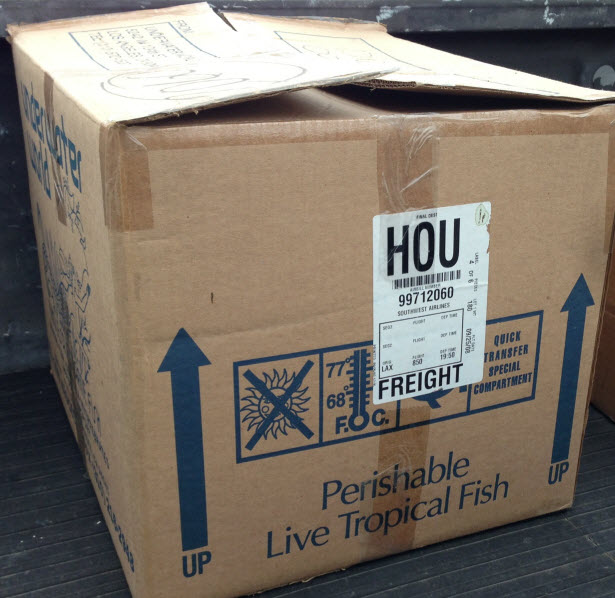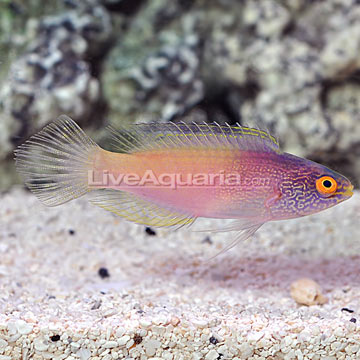Buying fish, corals, and invertebrates online can be a stressful ordeal. The prices may be cheaper than your local store and there may be a larger selection, both very enticing, but there are many pitfulls to online purchases that aquarium keepers just don’t expect. Things like shipping hangups, animals showing up dead on arrival, and customer service woes are all very influential on the overall process, and we’ve compiled a long list of tips, expectations, and ways to act when you make your online aquatic purchases.
Tips for Buying Livestock Online
First and foremost, get to know the store’s various policies. This will dictate your entire shipping experience. For example, shipping may be free after spending a certain amount, but if your livestock shows up DOA, it is likely that you will not get any of the shipping charges back. Because overnight shipping is so expensive, many vendors simply cannot let that go when they refund items that show up on your doorstep dead. It is unfortunate, and it may lead to a bad experience because you’ve spent lots of money but don’t have anything to show for it.
Another example is how to go about qualifying for a refund on an item that shoes up DOA. Some stores require photographs with timestamps on them, which lets them see how long it took from the time the fish was dropped off until the time the death was reported. This is important because vendors may try to argue that a particular shipment sat out in the sun too long. Alternatively, other online retailers may just credit your account back with little or no questions at all. Each store is so very different, and you may have to jump through a few hoops to get a refund or a replacement. Regardless, get to know the policies!
Keep in mind, too, that some stores may not ship your item if it starts looking bad. If a fish takes a turn for the worst, then you wouldn’t want them to ship it to you, right? Unfortunately, this is where a lot of confusion and frustration occurs. When you make the purchase, you’re given an expected date to ship. If the livestock is pulled for any reason, it will obviously delay shipping and, because communication isn’t always the greatest, you may not get notified immediately.
For a lot of online stores, all of the items are “what you see is what you get”, abbreviated WYSIWYG. This meas that the photo on the website is of the actual product you are purchasing. Not a representative of that product, but that specific fish or coral. That said, many of the photos on the website were taken under the most ideal conditions to make that animal look its best. When that animal shows up at your doorstep, it will be stressed out, probably faded in color, and if it is a coral, it will be retracted. Even after putting in your aquarium, there is a good chance it won’t ever fully resemble the picture on the website. Best case scenario is that it will regain coloration after some time.
That leads me to my next point. Mixups happen all of the time when it comes to online sales. If a vendor has hundreds of the same or similar products, there might be a chance that you don’t get the exact item you paid for. Now, you should at least get the same species you ordered, but it might not be the same exact individual. If you were shorted polyps or inches on a particular specimen, then shoot the store an email and try to work something out. Just keep in mind that it is expensive to ship things back and forth, so you’ll likely be stuck with whatever showed up at your door unless you are willing to foot the shipping bill or if the mistake was extremely obvious or even egregious.
If anything is unclear at any point, email the store from which you are purchasing. If the store has any amount of customer service, they will gladly answer any and all questions you raise. Engage them about shipping your livestock, discounts on multiple purchases, and any other burning questions that you may have but aren’t answered in an FAQ or policy section on the website. If nobody responds, then you might want to look elsewhere.
To finish out our tips for online purchasing, we highly recommend you read reviews. Hit up all manner of aquarium forums and research all of the consumer information outlets like the Better Business Bureau or other online review sources. That information is out there, you just have to look.
Let’s Use Some Proper Etiquette
Here is where it is easy to lose your cool and do something ill-advised. When things go awry, and they do fairly often, it’s easy to get mad and immediately blast the company online. While user experiences and reviews are crucially important, don’t be so hasty to judge. If your shopping experience is a bad one, keep lines of communication open with the vendor. Try to resolve things in a way that is fair for both parties, and by all means, keep the communications private until the end of the transaction. If you’re livestock shows up dead, don’t immediately go to the biggest forum you can find and start bashing them. Work thing out to the fullest extent, and if the store fails to live up to the minimum expectations (e.g. willingness to work with the customer, answering emails and phone calls, etc.) then go to the forums and seek advice and answers. Don’t immediately assume that you’ll get taken care of if you start flaming (or threaten to) on the forums to which you frequent. Sure, it brings in more people and puts more pressure on the vendor, but it may not turn out like you expect.
What to Expect When You’re Expecting (fish, frags, and inverts)
When it comes to online orders, many people have unusually high expectations. We’re in no way saying those expectations are unjustified, especially given how pricey this hobby can be, but sometimes even the best practices of an online retailer can never meet what is expected by a hobbyist. So, we’ve got a few things you should expect and a few you shouldn’t.
If the coral comes in slightly broken, but in otherwise good shape, some aquarists expect discounts or full refunds. Our answer to this is sure, go ahead and ask or browse the store’s policies for anything that could get you a discount or future store credit, but don’t be that guy who raises all sorts of hell because a frag came in with a branch broken off. If a coral comes in demolished, that’s one thing. Just don’t blow up a small issue into long, drawn out email battle that would only culminate in charge backs and forum flaming.
In other situations, there may be too few or too many ice packs or heating pads for the consumer’s comfort. In any situation, there is a significant amount of behind the scenes legwork that has to be done on both ends (the vendor and the consumer) to make sure the livestock goes from the online marketplace to the aquarium safely. Chances are, the vendor is doing the best they can or replicating what has been successful in the past. In your particular situation, it may not work, and you might have a dead animal on your hands.
In terms of realistic expectations, understand that a fish or coral might not measure up to how the store describes it. Most measurements given to fish or corals are “eyeballed”, and your 3″ chalice or 5″ tang may show up smaller. Stores and hobbyists selling on forums do this all of the time, but not necessarily to cheat anyone out of money by misrepresenting their products. In most situations, it is probably the results of improper gauging.
As far as shipping goes, you should expect aquarium livestock to be bagged with plenty of water and in a sturdy box. For stores that go above and beyond, the livestock may be double or triple bagged, the animal might be in a huge volume of water, the bags may be in a styrofoam box within the cardboard box, and you might even have some freebies. All great and wonderful, but these are the exceptions and not the rules. Regardless, as long as the package isn’t falling apart, things loosely packed, and water leaking out, then you shouldn’t have an issue.
Where the issues really happen are with the shipping company, all of which is out of the control of the aquarium retailer. Shipments get lost, delivery guys play kickball with boxes, the weather turns to crap, and things may not always arrive on time. In any of these situations, the store shouldn’t be to blame. That said, if things show up dead or signficantly damaged, you can expect to get a refund (at least a partial) for the items. Again, shipping costs will likely not be covered and it is best to try to work with the store as much as possible.
We hope these tips help in your livestock purchases, and if you have any more that we didn’t cover and you would like to share, then sound off in the comments section below.







